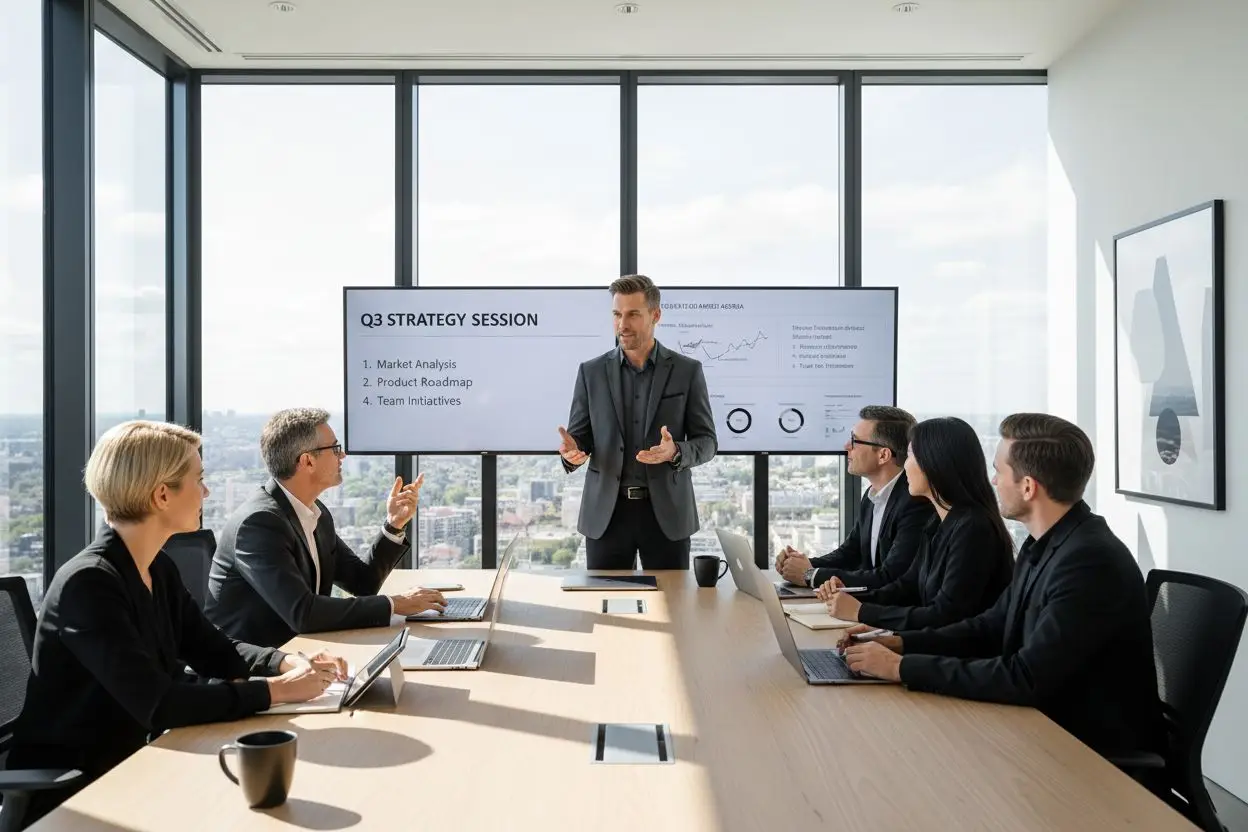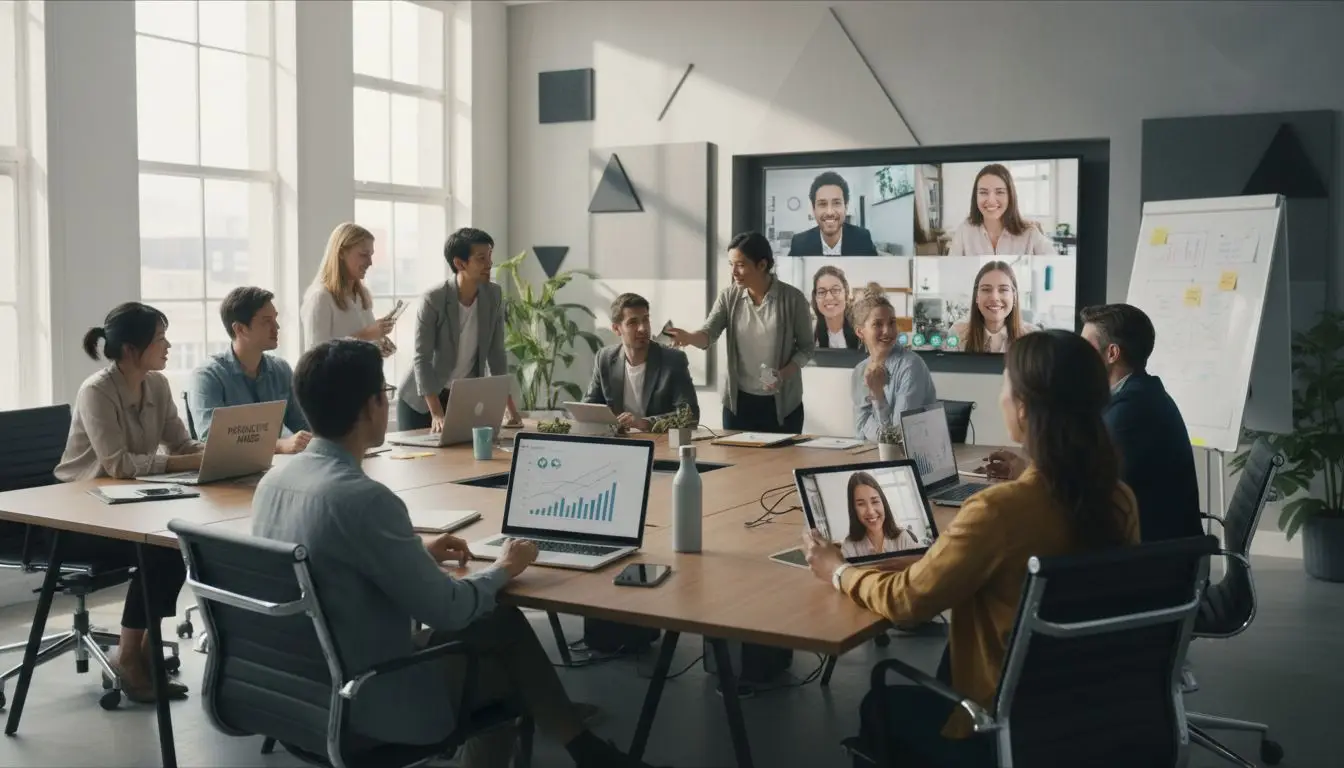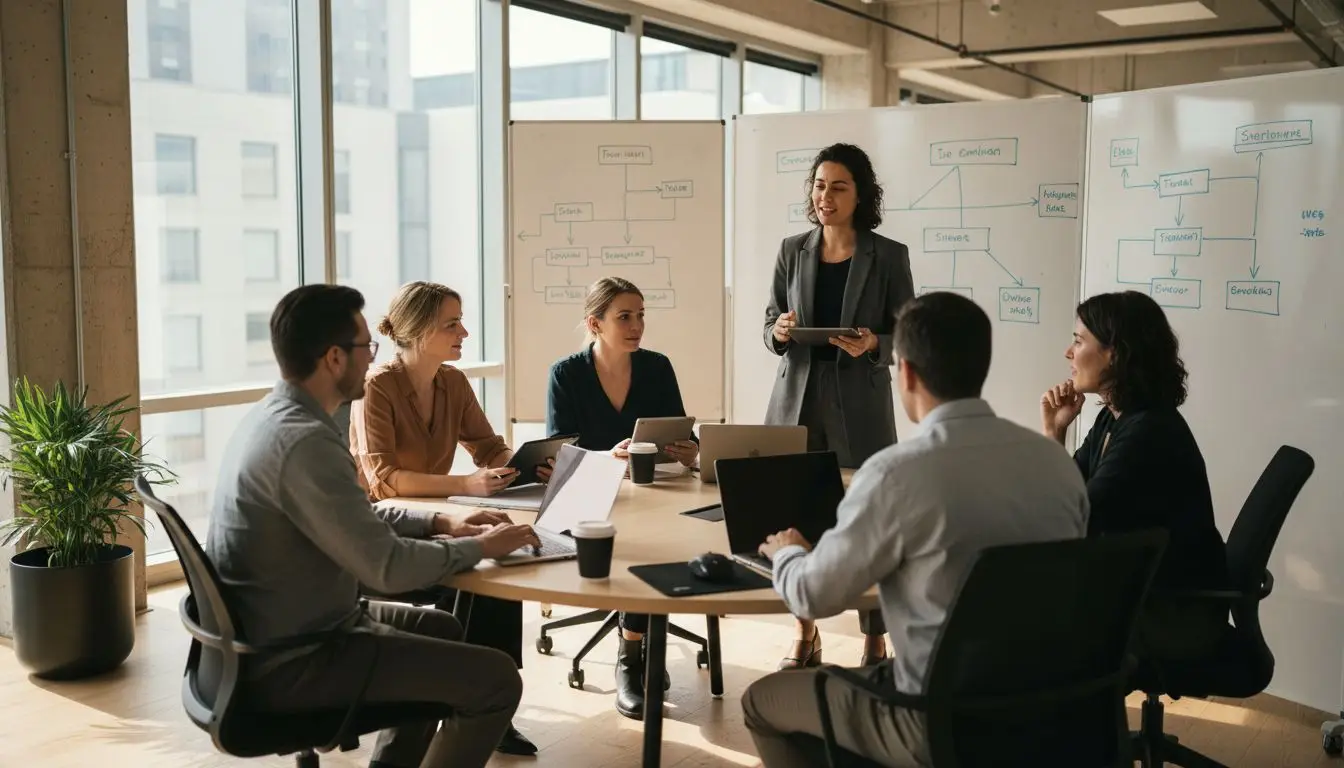Did you know that managers spend up to 23 hours a week in meetings, yet most believe half of that time is wasted? Meetings can either empower teams to move forward or drain valuable resources when poorly run. Learning what makes a meeting truly effective can reshape the way teams collaborate, enhance productivity, and turn every session into an opportunity for real progress.
Key Takeaways
| Point | Details |
|---|---|
| Effective Meetings | Successful meetings are defined by purpose clarity, thorough preparation, and structured presentation, transforming gatherings into strategic opportunities. |
| Meeting Types | Different meeting formats serve specific objectives; selecting the appropriate type enhances collaboration and productivity. |
| Preparation Best Practices | Prioritize defining meeting objectives, creating an agenda, and engaging participants to maximize effectiveness before meetings begin. |
| Roles and Responsibilities | Clear definition of roles such as decision-makers and advisers is essential to avoid common pitfalls and ensure productive outcomes. |
Table of Contents
- Defining Effective Meetings And Core Principles
- Types Of Business Meetings And Their Purposes
- Preparation And Agenda Setting Best Practices
- Facilitation Techniques For Productive Meetings
- Roles, Responsibilities, And Common Pitfalls
Defining Effective Meetings and Core Principles
Meetings are more than just scheduled gatherings. They represent critical collaborative moments where teams synchronize, make decisions, and drive organizational progress. Effective meetings transform from time-consuming events into strategic opportunities for communication and alignment.
According to McKinsey, meeting effectiveness hinges on three fundamental pillars:
- Purpose Clarity: Each meeting must have a well-defined objective
- Thorough Preparation: Participants should arrive informed and ready to contribute
- Structured Presentation: Discussions require intentional organization and flow
Research from a comprehensive study analyzing meeting dynamics reveals specific factors that significantly impact outcomes. Large-scale research highlighted key predictors of meeting success, including:
- Pre-meeting communication strategies
- Well-constructed meeting agendas
- Consistent post-meeting documentation
- Strategic management of attendee numbers and locations
Successful meetings aren’t about duration but about delivering tangible value. They should be laser-focused, respect participants’ time, and generate clear actionable outcomes.
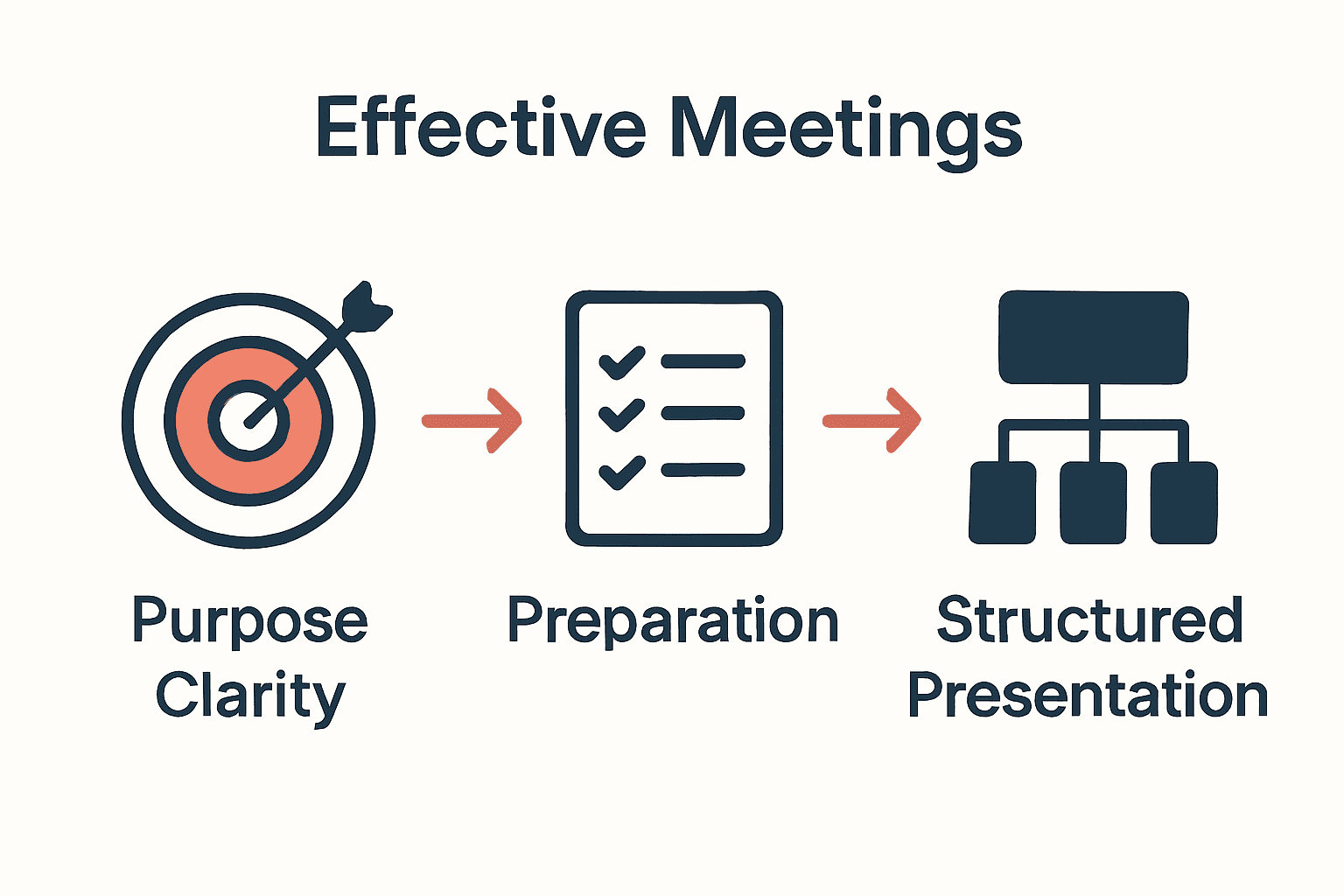 The goal isn’t to meet for meeting’s sake, but to create meaningful collaborative moments that propel projects and teams forward.
The goal isn’t to meet for meeting’s sake, but to create meaningful collaborative moments that propel projects and teams forward.
Types of Business Meetings and Their Purposes
Business meetings are not one-size-fits-all. Strategic communication channels come in various formats, each designed to address specific organizational needs and objectives. Understanding these different meeting types helps teams optimize their collaborative efforts and drive meaningful outcomes.
Key Types of Business Meetings
- Status Update Meetings: Quick, focused sessions where team members share progress, challenges, and current project developments
- Strategic Planning Meetings: In-depth gatherings focused on long-term goals, organizational direction, and comprehensive strategy development
- Problem-Solving Meetings: Collaborative sessions dedicated to addressing specific challenges, brainstorming solutions, and developing actionable strategies
- Decision-Making Meetings: Structured discussions where key stakeholders evaluate options and make critical organizational decisions
- Innovation and Brainstorming Meetings: Creative sessions designed to generate new ideas, explore innovative approaches, and encourage cross-functional thinking
Each meeting type requires a unique approach and preparation strategy. Status update meetings typically benefit from concise, time-boxed formats, while strategic planning sessions might demand more comprehensive preparation and extended timeframes. The key is matching the meeting format to its intended purpose.
Here’s a comparison of common business meeting types and their primary purposes:
| Meeting Type | Main Purpose | Typical Duration |
|---|---|---|
| Status Update | Share progress Identify blockers |
15-30 minutes |
| Strategic Planning | Define long-term goals Set direction |
1-2 hours |
| Problem-Solving | Analyze issues Develop solutions |
30-60 minutes |
| Decision-Making | Evaluate options Make choices |
30-60 minutes |
| Innovation & Brainstorming | Generate new ideas Encourage creativity |
45-90 minutes |
Successful meetings transcend mere information exchange. They create opportunities for alignment, foster team collaboration, and transform organizational communication from transactional interactions into strategic opportunities for growth and innovation. By understanding and implementing the right meeting type, teams can significantly enhance their collective productivity and strategic effectiveness.
Preparation and Agenda Setting Best Practices
Meeting success begins long before participants enter the room. Effective preparation is the foundation of productive collaborative sessions, transforming potentially unfocused gatherings into strategic opportunities for meaningful progress.
According to Atlassian, comprehensive meeting preparation involves several critical steps:
- Define the meeting’s explicit purpose
- Create a detailed agenda with specific time allocations
- Select the most appropriate participants
- Distribute pre-meeting materials in advance
- Prepare the physical or digital meeting space
- Plan post-meeting follow-up mechanisms
Meeteor recommends six strategic approaches to encourage participant engagement and preparation:
- Co-create the agenda: Involve key participants in agenda development
- Set crystal-clear expectations: Communicate precise objectives and participant roles
- Send timely reminders: Ensure participants are aware and prepared
- Specify preparation time: Allocate reasonable windows for pre-meeting work
- Make pre-work engaging: Design preparation tasks that are accessible and interesting
- Reinforce accountability: Create systems that track and encourage preparation
The ultimate goal of thorough preparation is not bureaucratic compliance, but creating an environment where every meeting participant can contribute meaningfully. By investing time in strategic planning and clear communication, teams can transform meetings from mundane obligations into powerful collaborative moments that drive organizational success.
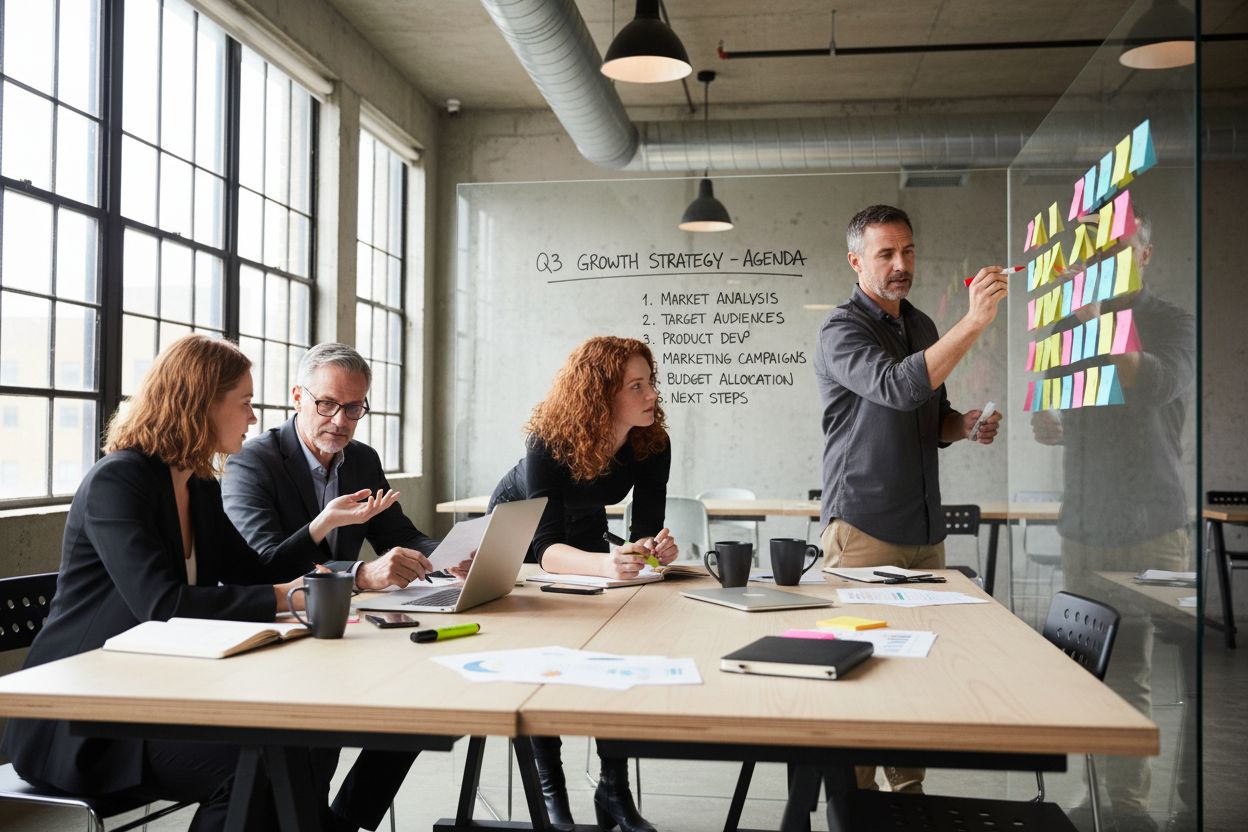
Facilitation Techniques for Productive Meetings
Meeting facilitation is an art form that transforms potentially unproductive gatherings into dynamic, engaging collaborative experiences. Effective facilitation requires a strategic blend of techniques that encourage participation, maintain focus, and drive meaningful outcomes.
According to Sally’s blog, several innovative techniques can dramatically enhance meeting engagement and productivity:
Structured Engagement Techniques
- Icebreakers: Quick activities that help participants feel comfortable and connected
- Lightning Rounds: Rapid, time-limited sharing sessions that keep discussions concise
- Mind Mapping: Visual brainstorming technique that captures ideas and connections dynamically
- World Café: Rotating group discussion method that encourages diverse perspectives
- Fishbowl Technique: Structured conversation format where select participants discuss while others observe
Digital Facilitation Tools
Modern meetings benefit from powerful digital tools that support collaboration:
- Miro: Interactive whiteboard for visual collaboration
- Mentimeter: Real-time polling and audience interaction platform
- AI Documentation Assistants: Automated note-taking and action item tracking
The key to successful facilitation is flexibility. No single technique works for every meeting. Read more about virtual meeting strategies to complement these facilitation techniques. Smart facilitators adapt their approach based on the meeting’s purpose, participant dynamics, and desired outcomes. By combining structured techniques with digital tools, you can transform meetings from mundane check-ins into powerful collaborative experiences that energize teams and drive meaningful progress.
Roles, Responsibilities, and Common Pitfalls
Successful meetings depend on clear role definition and strategic participation. Meeting dynamics require intentional design and understanding of each participant’s specific contribution to achieve collective goals.
According to McKinsey, organizations should recognize four primary meeting roles:
- Decision-Makers: Individuals authorized to make final choices
- Advisers: Participants providing expert insights and recommendations
- Recommenders: Team members offering strategic suggestions
- Execution Partners: Those responsible for implementing meeting outcomes
Common Meeting Pitfalls
Lab Manager identifies critical mistakes that undermine meeting effectiveness:
- Scheduling unnecessary meetings
- Poor pre-meeting planning
- Inadequate documentation tools
- Lack of structured follow-up processes
- Inconsistent accountability mechanisms
To mitigate these challenges, organizations should conduct regular meeting audits. This involves systematically reviewing meeting practices, identifying recurring inefficiencies, and implementing targeted improvements. Read more about team collaboration strategies to enhance your meeting effectiveness.
Ultimately, treating leadership time as a precious resource transforms meeting culture. By clarifying roles, anticipating potential pitfalls, and maintaining a disciplined approach to collaboration, teams can convert meetings from potential time-wasters into powerful strategic instruments that drive organizational progress.
Transform Every Meeting Into Action With Mapsoft Solutions
Is your team struggling to keep meetings focused, productive, and actionable? As highlighted in our complete guide, key challenges like documentation gaps, scattered communication, and lack of follow-up turn effective meetings into missed opportunities. If you want to turn decision-making and collaboration into measurable business results, you need tools that simplify workflows and ensure everyone leaves the room with clarity and purpose.
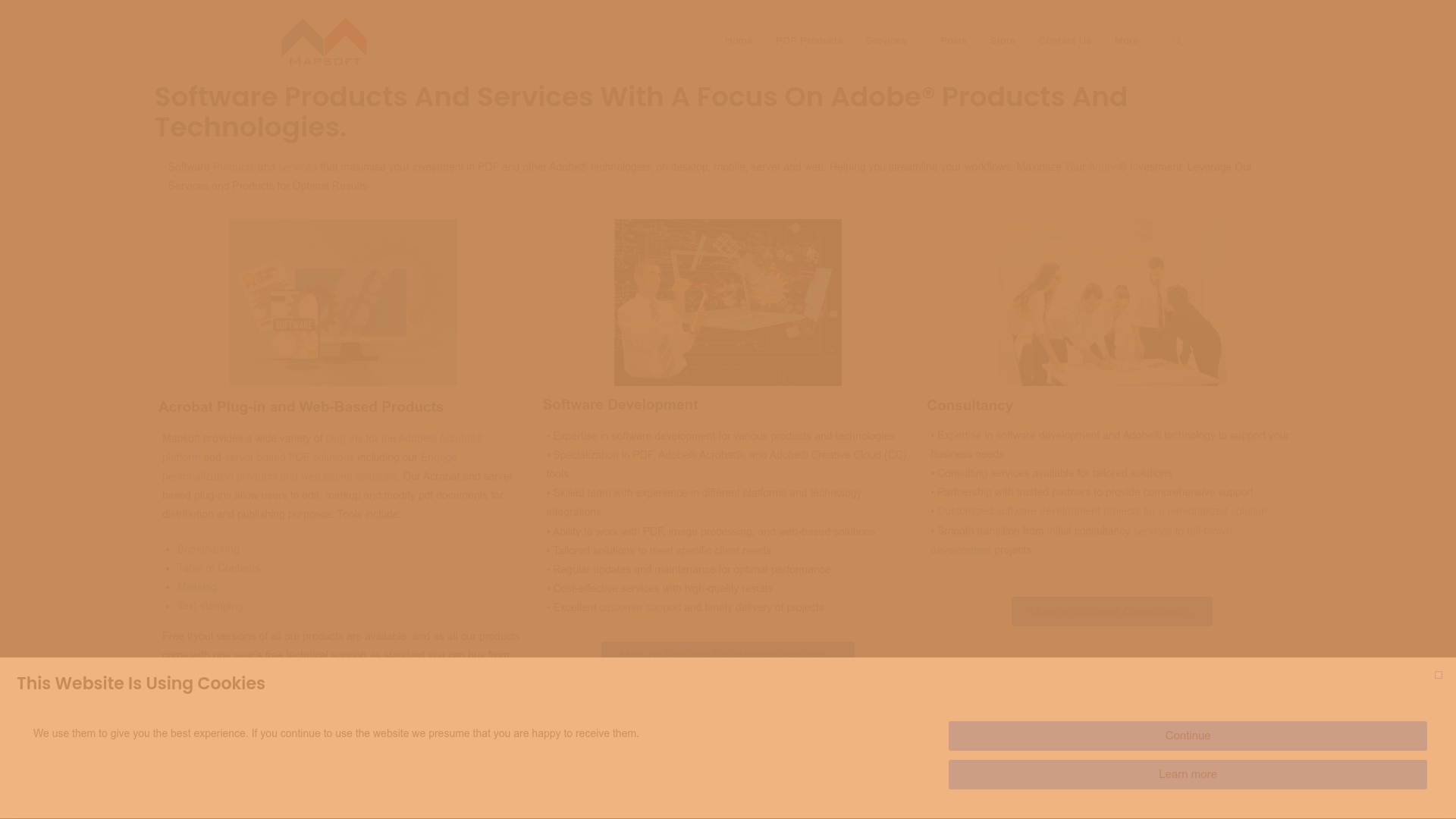
Mapsoft.com offers scalable PDF and Adobe Acrobat solutions designed for teams who demand seamless meeting outcomes. Automate agenda preparation, centralize documentation, and master post-meeting follow-up with advanced tools such as PDF merging, batch workflows, and actionable document management. Streamline your meeting materials, secure your records, and guarantee accessible, actionable summaries for every participant. Make your next meeting matter—visit Mapsoft.com or explore the Mapsoft PDF Hub to empower your team with instant, reliable document handling. Start optimizing your meetings today and set a new standard for productivity in your workplace.
Frequently Asked Questions
What are the key principles for leading effective meetings?
Effective meetings rely on three core principles: Purpose Clarity, Thorough Preparation, and Structured Presentation. Each meeting should have a clear objective, participants must be well-prepared, and discussions should be organized and purposeful.
What types of business meetings are there, and what are their purposes?
Common types of business meetings include Status Update Meetings (for sharing progress), Strategic Planning Meetings (focusing on long-term goals), Problem-Solving Meetings (to address challenges), Decision-Making Meetings (for evaluating options), and Innovation Meetings (to generate new ideas). Each serves a specific organizational need.
What best practices should be followed for preparation and agenda setting?
Best practices include defining the meeting’s purpose, creating a detailed agenda with time allocations, selecting appropriate participants, distributing materials in advance, preparing the meeting space, and planning follow-up mechanisms to ensure accountability and engagement.
How can meeting facilitation techniques improve productivity?
Meeting facilitation techniques, such as icebreakers, lightning rounds, and mind mapping, enhance engagement and focus. Additionally, using digital tools like interactive whiteboards and real-time polling can further drive collaboration and keep discussions on track.

